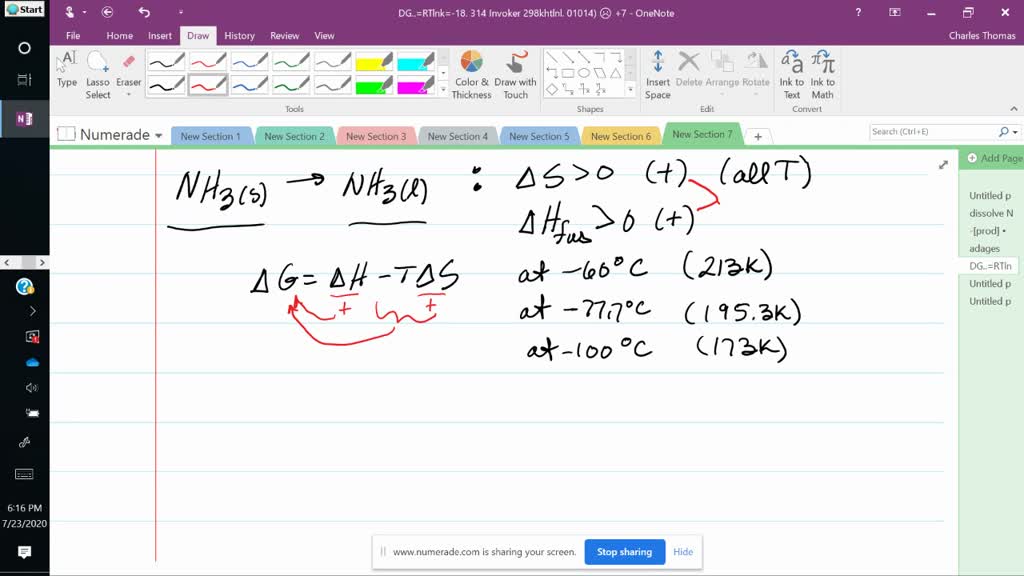

Hint: 273 K is the solid-liquid phase change temperature and 373 K is the liquid-gas phase change temperature. If the heat of fusion for H 2O is 333.5 kJ/kg, the specific heat capacity of H 2O (l) is 4.18 J/(g*K), the heat of vaporization for H 2O is 2257 kJ/kg, then calculate the heat required to convert 1.00 kg of H 2O (s) with the initial temperature of 273 K into steam at 373 K.When a group of atoms is in the gaseous state, it's atoms can devote all their energies into moving away from one another (kinetic energy). Note: for glucose, use Delta Hof - 1274.5 kJ/ mol, So 212.1 J/ (mol K), Delta Gof - 910.56 kJ/mol. However, once the intermolecular and intramolecular forces which restrict the atoms' movement are dissociated (when enough energy has been added), potential energy no longer exists (for monatomic gases) because the atoms of the substance are no longer forced to vibrate and be in contact with other atoms. Calculate Delta Ho, Delta So, and Delta Go for this reaction at 25oC. The thermal energy that is added to the substance is thus divided equally between the potential and the kinetic energies because all aspects of the atoms' movement must be excited equally Likewise, kinetic energy is just another way to have energy, which describes an atom's vigorous struggle to move and to break away from the group of atoms. Potential energy is just a way to have energy, and it generally describes the random movement that occurs when atoms are forced to be close to one another. atomic bond, van der Waals forces, etc) have not yet been dissociated and prevent the atomic particles from moving freely about the atmosphere (with velocity). This is because the intermolecular and intramolecular forces that exist between the atoms of the substance (i.e. Note that ΔE thermal is divided between ΔPE and ΔKE for substances in the solid and liquid states. ΔE tot = ΔE thermal + ΔE bond and ΔE tot = ΔPE + ΔKE are related by the equationsįor substances in the solid and liquid states. Potential energy is the energy associated with random movement, whereas kinetic energy is the energy associated with velocity (movement with direction).
#Delta h and delta s for dioxide webook plus#
Another way in which ΔE totcan be expressed is change in potential energy, ΔPE, plus change in kinetic energy, ΔKE. As shown above, ΔE totcan be expressed as ΔE thermal + ΔE bond. \).Įnergy can be observed in many different ways.


 0 kommentar(er)
0 kommentar(er)
